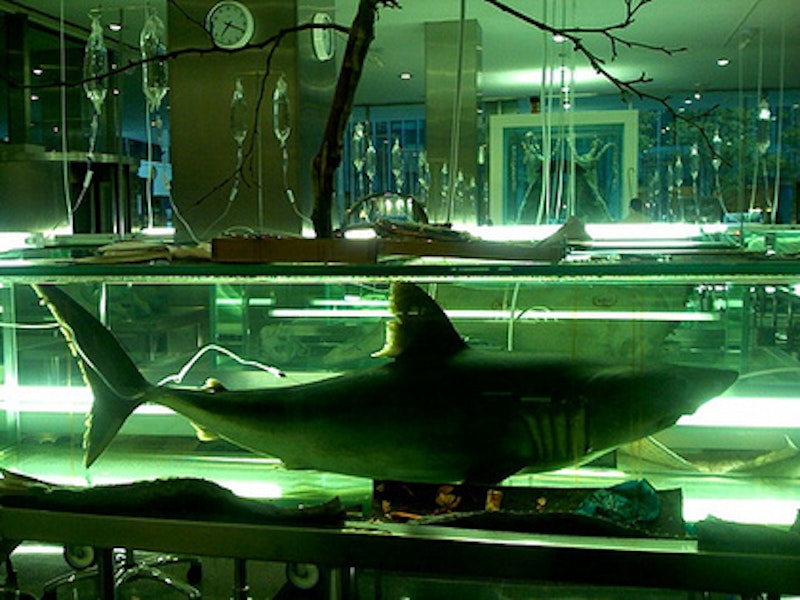Once you have found the shark, imagine that it represents Sotheby’s. No, go further than that. Imagine that it represents the entire art world and the manner in which it pursues its business. See how predatory it is, how cunning, how fixated on its prey, how implacable and ruthless. Now stand in front of this evil killing machine, look it straight in its piggy little eyes and start flicking V-signs at it. Go on. Dance around in front of it, wiggle your behind at it, stick your tongue out between your lips and blow raspberries at it. That, more or less, is what Damien Hirst is doing to the art world by putting 223 new works up for sale at Sotheby’s.
The art world, you see, doesn’t do things this way. The way it is supposed to happen is that new art is sold by dealers in galleries, and only when it has been around the houses a few times does it turn up again in the auction rooms, to be resold for a profit. That is how it has always been. Sotheby’s has been around since March 11, 1744, when a certain Samuel Baker auctioned a selection of rare books “in all branches of Polite Literature” at his office in London, and not once in the intervening two and a half centuries has the company sold new work by a living artist direct to the public.
“Yeah, but if you don’t like the rules, change the rules,” chirps a noticeably chipper Hirst as he leads me through the extraordinary labyrinth of sharks, butterflies, bulls, skulls, scalpels, gold bars and diamonds he has somehow managed to cram into the formerly elegant Sotheby’s galleries on New Bond Street. The plush spaces were created for the display of 42-piece Sèvres tea services, not for full-size zebras in glass cases, so the art sometimes seems too big for its surroundings. But the resulting claustrophobia merely adds to the splendid London buzz of it all. Anyone seen the recession? Not in here, mate! Squeezing your way through these remarkable sights is a bouncy and exciting journey. Hirst has forced Sotheby’s to get in touch with its inner branch of Accessorize.
“I was indoctrinated by the gallery system - that you don’t do auctions,” he admits with another bout of happy scratching as we stand in front of a very convincing unicorn created by appending a narwhal horn to the forehead of a snow-white pony. “But who says you have to do it this way and not some other way?”

